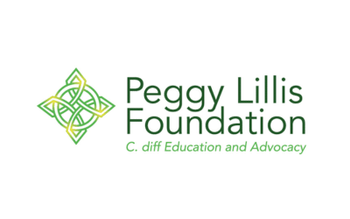Update December 11, 2024: During his media briefing yesterday, World Health Organization's Director-General, Tedros Adhanom Ghebreyesus, PhD, discussed the ongoing situation in the Democratic Republic of Congo (DRC) about the mysterious disease recently reported by the organization.
In his remarks, he said of the 12 initial samples collected of people with the disease, 10 tested positive for malaria, and he said it’s possible that more than 1 disease is involved.
He stressed the area is a remote area of the country, telecommunications are limited and access to the area has been made harder by the rainy season. He also said the area also suffers from high levels of malnutrition and low vaccination coverage, leaving children vulnerable to a range of diseases including malaria, pneumonia, measles, and others.
The Director-General said further samples will be collected and tested to determine the exact cause or causes.
Original article: The World Health Organization (WHO) updated the public on the ongoing mysterious disease that is mainly affecting small children under 5 in the Democratic Republic of Congo (DRC). Between October 24 and December 5, there have been 406 cases of an undiagnosed disease and 31 deaths, which equates to a case fatality rate of 7.6%.
Patients’ symptoms include fevers, headaches, coughs, runny noses and body aches. The WHO says that with the clinical presentation and symptoms reported, and the mortality, a number of respiratory viruses are being considered including pneumonia, influenza, COVID-19, and measles as well as malaria are all being considered as potential causal factors with malnutrition as a contributing factor.
Malaria is endemic to DRC, and may be causing or contributing to the cases. Laboratory tests are underway to determine the exact cause. At this stage, it is also possible that more than one disease is contributing to the cases and deaths.
Thus far, this appears to be a very localized outbreak in a rural and remote area called the Panzi health zone in the Kwango Province of the country. Authorities report the cases have been reported from 9 out of 30 health areas in the Panzi health zone, and the he majority of cases (95.8%) are reported from Tsakala Panzi (169), Makitapanzi (142) and Kanzangi (78) health areas.
In the Panzi health zone, children aged 0-14 years represent 64.3% of all reported cases, with the age groups 0-59 months, 5-9 years, and 10-14 years accounting for 53%, 7.4%, and 3.9% of cases, respectively. Females constitute 59.9% of the total cases. Among the deaths, 71% are below the age of 15, with 54.8% of the total in children under the age of five years. All severe cases were reported to be malnourished. There are 145 cases aged 15 and above, of which nine died (CFR: 6.2%). Deaths have primarily occurred in the village communities.
There have been rapid response teams sent to the area to identify the cause of the outbreak and strengthen the response. They are collecting samples for laboratory testing, providing a more detailed clinical characterization of the detected cases, investigating the transmission dynamics, and actively searching for additional cases, both within health facilities and at the community level. The teams are also aiding with the treatment of patients, risk communication and community engagement.
What You Need to Know
The outbreak primarily affects children under five in the Panzi health zone, Kwango Province, with 406 cases and 31 deaths (7.6% case fatality rate).
The majority of cases (64.3%) involve children aged 0–14, with 54.8% of deaths occurring in children under five. Females constitute 59.9% of cases.
he WHO assesses the local risk as high, national risk as moderate, and regional/global risk as low. However, proximity to Angola raises concerns about potential cross-border transmission.
Authorities also report that further study needs to be done to clarify whether anemia observed in severe cases is linked to the outbreak. The main hypothesis of respiratory illness should be validated by studying its relationship with seasonal influenza and other potential factors. Additionally, historical outbreaks, such as that of typhoid fever which was reported in the health zone two years ago, should be reviewed to identify recurring vulnerabilities that may inform current response efforts. In addition, understanding general malnutrition rates and identifying cases of acute malnutrition in the affected population can inform appropriate nutritional care and prevent further deaths.
In terms of the risk assessment, the WHO has offered varying degrees of risk. The organization says the overall risk level to the local affected communities within the Panzi health zone is assessed as high. At the national level, the risk is considered moderate. However, the potential for spread to neighboring areas, coupled with gaps in surveillance and response systems, this assessment underscores the need for heightened preparedness.
At the regional and global levels, the risk remains low at this time, but the proximity of the affected area to the border with Angola raises concerns about potential cross-border transmission.
Reference
Disease Outbreak News; Undiagnosed disease – Democratic Republic of the Congo. World Health Organization. December 8, 2024. Accessed December 10, 2024.
https://www.who.int/emergencies/disease-outbreak-news/item/2024-DON546


































































































































































































































































































